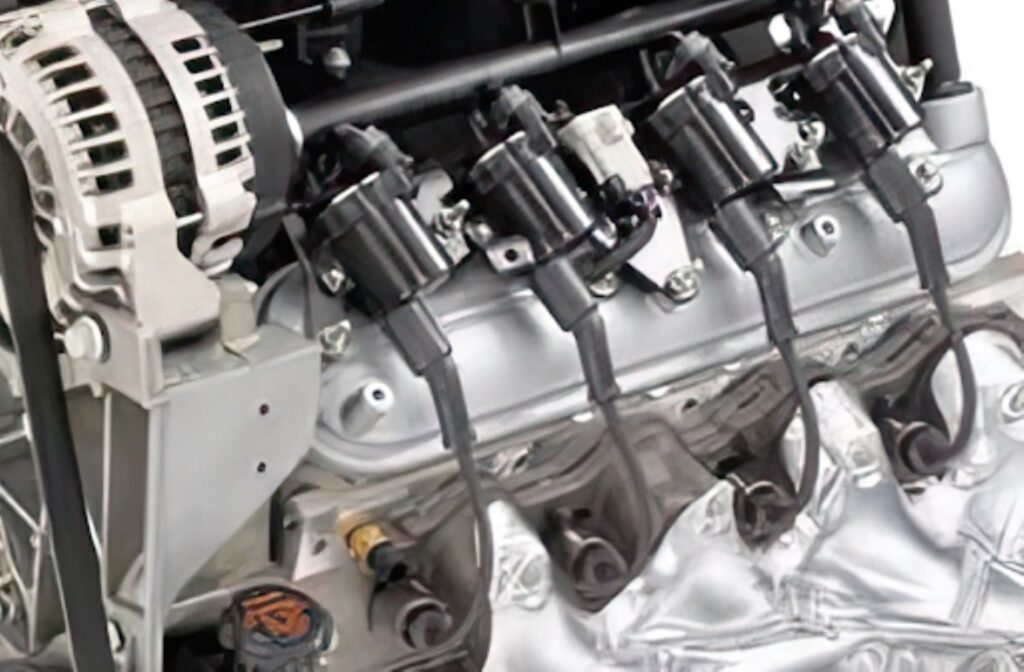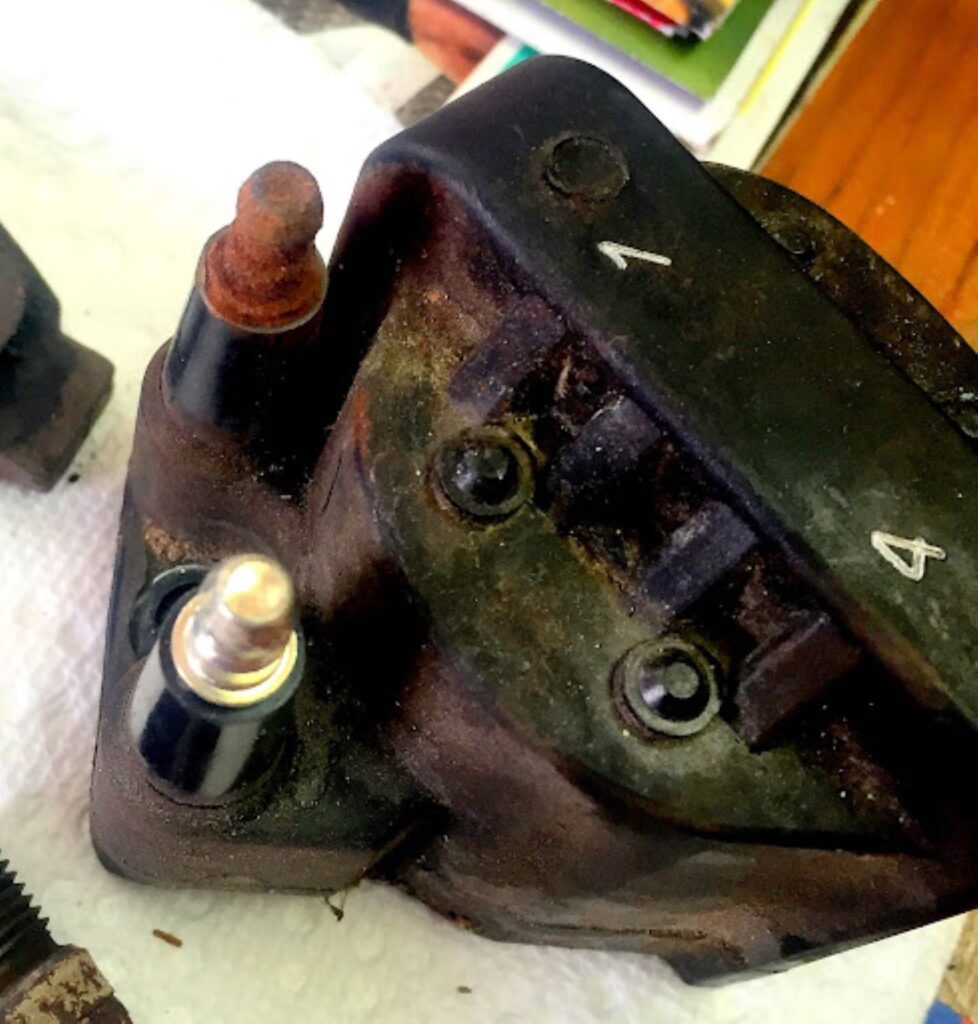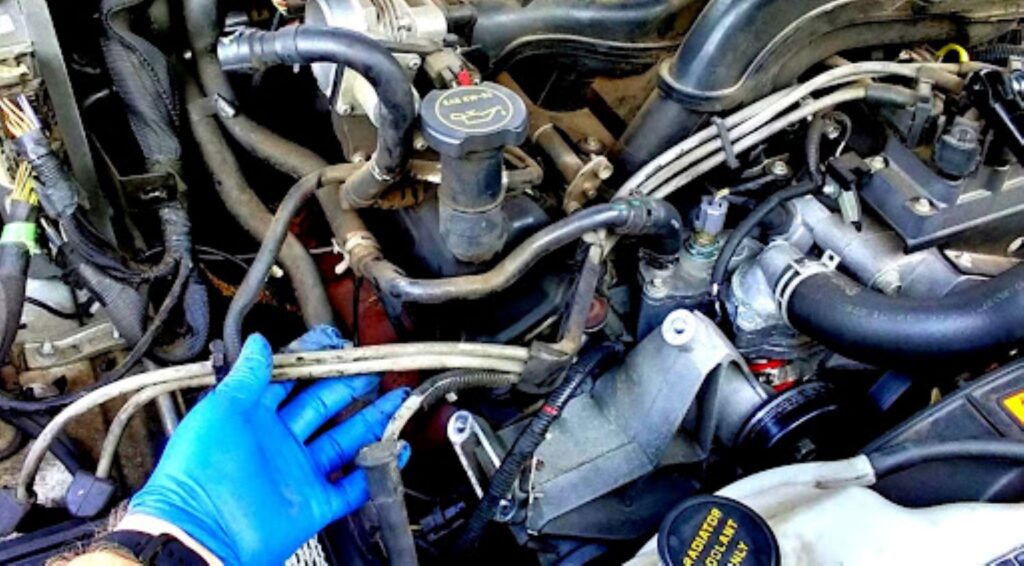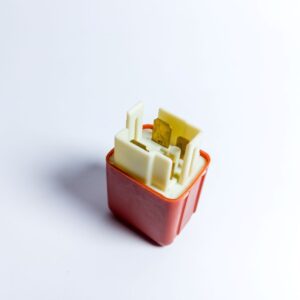What Is a Car Ignition Cable?
An ignition cable or spark plug wire connects the distributor or ignition coil to the spark plug. It delivers high voltage current to the spark plugs, which ignites the mixture that powers the car.
On a distributor type ignition system, the spark is delivered from the ignition coil to the center of the distributor cap where it is fed through the rotor, which rotates at camshaft speed so that the firing tip of the rotor is near the correct terminal to fire the spark plug. The spark plug cable carries the spark from the distributor cap to the spark plug.
Thus, the firing order of the engine dictates how the spark plug cables or wires are connected to the distributor cap. As ignition timing varies, the distributor rotor always needs to be nearest the appropriate terminal when the spark happens.

Ignition Cables and the Ignition System
The ignition system is designed to increase battery voltage (12 – 14 volts) to very high voltage (60 – 120,000 volts) and deliver that voltage as a carefully timed spark to each cylinder just before it reaches the top of its compression stroke. The spark ignites the air-fuel mixture and superheats the inert nitrogen that makes up 78% of the air.
This nitrogen expands rapidly, driving the piston down to turn the crankshaft, which is connected to drive the belts and pulleys on one end of the engine and the flywheel/transmission on the opposite end.
The spark created by the ignition system is delivered through silicone rubber spark plug cables with carbon fiber cores with metal terminals on each end. The terminal on one end of each wire snaps into the distributor cap or coil pack and the terminal on the opposite end of each wire snaps onto the upper tip of the spark plug. Metallic wire isn’t used for spark plug cables due to the dreadful radio frequency interference that would result.

Bad Ignition Cable Symptoms
If you have damaged or faulty spark plug wires, you might encounter the following problems:
Engine Misfires
Spark plug boots can leak spark (you can use soapy water to find such a leak). Spark plug wires can burn out in the end so that the spark has to “jump” within the wire or at the terminal end. Proper spark plug wire resistance is 5,000 ohms per foot.

In the photo, notice how the #4 terminal is shiny and the #1 terminal is rusty and corroded. This indicates a problem with the spark plug wire where it connects to the metal terminal.
If you see a terminal like this or if you look into a spark plug wire boot and see rust or soot, that wire should be replaced. If the spark can’t make it to the spark plug because of a burned out or leaking spark plug wire, you’ll feel a misfire that may or may not be intermittent.
Note that other issues, like worn spark plugs and bad ignition coils, can also cause engine misfires. So if you can’t pinpoint what’s causing your car to misfire, take it to a mechanic for a proper diagnosis.
Engine Hesitation
Your ride should smoothly move when you press the pedal to increase your speed. However, if the supply of current to the spark plug is intermittent due to bad wires, the engine can hesitate or hiccup.
A leaking spark or a cracked plug will usually cause a “bite” at about 45 mph on slight hills. If the spark plug misfires steadily in these situations, it will cause a shuddering feeling. It’s less noticeable on a V8 than on a V6 or on a 4 cylinder.
Keep in mind that engine hesitation can also happen due to other problems, like a dirty air filter, clogged fuel injectors, and faulty oxygen sensors. The best way to determine what’s causing the issue is a trip to an auto repair shop.
Poor Fuel Economy
When there isn’t enough current reaching the spark plug due to a bad ignition cable, the system will try to compensate by injecting more fuel into the engine, reducing gas mileage.
If you’re not sure whether your reduced fuel economy is due to a bad spark plug wire, let a mechanic check your car.

Rough Idling
While rough idling usually occurs due to a bad spark plug, a faulty ignition cable can cause the same problem if it fails to deliver the current. Note, however, that this is unusual. Spark plug wires, unless they’re really bad, won’t cause a rough idle, but will more probably cause a misfire under load.
Again, other issues can cause rough idling. So if your ride feels shaky or bouncy, take your ride to an auto repair shop right away for a proper checkup.
Hard Starting
Faulty ignition cables can also make starting your engine difficult, especially during rainy or damp weather conditions. However, this symptom can also mean that your ignition coils are bad.
Other problems that can cause hard starting or even a “no start” condition include a failing starter, a dying battery, and compression and timing issues.
Visible Damage
If you’re an experienced DIYer, you can also know if your ignition cables are bad by physically inspecting them. Look for cracks in the insulation. Wires can also start to melt once they come into contact with warm parts of your engine.
Ignition Cable Inspection Tips
If you’re an experienced automotive DIYer, you can inspect your ignition cables to determine whether they need replacement. Consider these tips:
Check for Proper Routing
Inspect the wires’ position and make sure they’re in their proper factory wiring separators. Then, check for the wire lying against any sharp metallic object or hot manifold that can cause damage to the insulation.
Ensure that Wires Are Secure
When reinstalling the wires route them exactly as they were before – take your time – every job is a picture of the person who did it.
Loose wires can cause ignition issues. So make sure the cables are secured and connected to the spark plugs and ignition coils.

Look for Excessive Dirt and Oil
Too much dirt and oil on ignition wires can damage them, so wipe them off if you spot them. Also, examine the cables’ protective covers. If they’re thin or damaged, it might be time to replace them.
Is it Safe to Drive with a Bad Ignition Cable?
No. The drivability issues a faulty ignition cable can cause make driving dangerous and a hassle. Imagine your car misfiring or hesitating while you’re in the middle of a freeway or a busy intersection.
How Much Is an Ignition Cable Replacement?
Expect to spend around $150 to $200 for an ignition cable replacement. You can get an aftermarket ignition coil wire replacement for less than $100.
Of course, you’ll have to consider labor and other related repairs. Your car’s make and model can also affect pricing.
Finding the Right Ignition Cable Replacement
Manufacturers typically recommend an 8 or 8.5mm plug wire for most applications. But to be sure, you can always check your owner’s manual or contact a trusted mechanic.
There are many aftermarket ignition cables available online, so finding a replacement will be a breeze. If you’re not sure what aftermarket brand to get your ignition cable from, we suggest looking at product review pages. They’ll give you an idea about the performance of a specific brand or the quality of a product.
Where to Get a New Ignition Cable for Your Vehicle
Performance issues can be attributed to hundreds of things, including a damaged ignition cable. Leaving this kind of problem unresolved can be costly, and you might find your engine misfiring or hesitating until you replace the old ignition cable.
Here at CarParts.com, we have a great selection of OE-grade ignition cables on hand and ready to ship, so all you have to do is place your order.
Simply enter your vehicle’s specifications into our website’s vehicle selector to browse our catalog of direct-fit ignition cables. You can also use the search filters to find an ignition cable according to your preferred brand, price range, and more.
Order now, and we’ll deliver your product straight to your doorstep in as fast as two business days.
Working with a tight budget? Our products come with a low-price guarantee, so you don’t have to worry about breaking the bank for urgent repairs.
Shop via our toll-free hotline or ask our customer service representatives any questions you may have about your order. Our team offers round-the-clock support, 365 days a year.
Check out our products today, and grab the best deals on an ignition cable today!
Any information provided on this Website is for informational purposes only and is not intended to replace consultation with a professional mechanic. The accuracy and timeliness of the information may change from the time of publication.






























